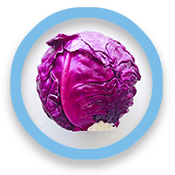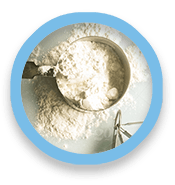SCIENCE EXPERIMENTS FOR KIDS
LEARNING ABOUT ACIDS & BASES
In this experiment kids will learn that Acids and Bases isn't the name of a metal band
In this experiment kids will learn that Acids and Bases isn’t the name of a metal band
Most kids are familiar with the sour or tangy taste of lemon juice, and have seen a cake being made with baking soda. What they probably don’t know is that they’ve already had their first chemistry lesson in acids and bases!
In this activity, students will gain an understanding of acids and bases in the presence of a chemical called anthocyanin. Cabbage juice will be the indicator solution full of anthocyanins. When you’re done, continue the experiment by eating some of the delicious cabbage, and noticing how the acids in your stomach help digest food.
GATHER THIS:
- Red cabbage (one head)
- Grater or knife with cutting board
- Hot water
- Eye dropper or squirt bottle
- Large bowl
- Clear cup(s)
- Clear household test liquids:
- Vinegar
- Antacid (crushed and dissolved in water)
- Vitamin C (crushed and dissolved in water)
- Baking soda (dissolved in water)
- Lemon juice
- Other liquids in your kitchen
*Take care when mixing chemicals
THEN DO THIS:
- Grate or cut the cabbage into small shreds to fill half the bowl.
- Add enough hot water to the bowl to cover the cabbage plus an inch or so. Allow to sit 30 min.
- Strain the mixture. Retain the purple indicator solution.
- Pour 5 tablespoons of the purple indicator solution into a cup.
- With an eye dropper, add one drop at a time of one household test liquid to the purple indicator solution. Notice any changes.
- If you don’t notice any changes after you add a few tablespoons of the test liquid, dilute the purple indicator solution in another cup and start again. You can also increase the concentration of your test liquid if you dissolved it in water. Repeat as necessary.
- Try other test liquids in your kitchen. **Do not mix some liquids together**
- Dispose of all of the liquids in an environmentally responsible manner.
ASK THIS:
- Does adding just one test liquid change the purple indicator solution to just
one color, or many? - How many different colors can you make using the test liquids in your household?
- After the color changes, can you add anything to the change the liquid color
back to purple? - How would you explain what happened if you turn the liquid back to purple?
- Watch through the side of the cup as you drop the test liquids to observe changes.
- Which test liquid do you think is most acidic/basic? Why?
- Does swirling the liquid change the color?
- Does tap water change the color of the purple indicator solution?
WHAT IS HAPPENING?
The test liquids are acids or bases. An acid is a chemical that gives up hydrogen ions in solution and a base is a chemical that accepts hydrogen ions in solution.
Acidic foods like lemons taste sour and bases like detergents and soaps can feel slippery. Cabbage juice is rich in natural indicator chemicals called anthocyanins. These occur in a wide variety of foods including, but certainly not limited to, strawberries, blackberries, eggplant, oranges and wine. There are a wide variety of anthocyanins, but most turn more blue and green in the presence of bases, and red or pink in the presence of acids.
Adding an acid to the purple cabbage juice will make our indicator solution turn pink while adding a base will make it turn blue or green. If you add both in the right amounts based on their concentration, they neutralize one another and the solution returns to purple.
WHAT THIS TEACHES:
Skills: Scientific process, mixing, observations skills, titration
Theme: Chemistry
Join the CuriOdyssey Community
LOCATION
1651 Coyote Point Drive
San Mateo, CA 94401
Ohlone Land Acknowledgement
650-342-7755
[email protected]
CuriOdyssey is a 501(c)(3) non-profit, Tax ID 94-1262434





